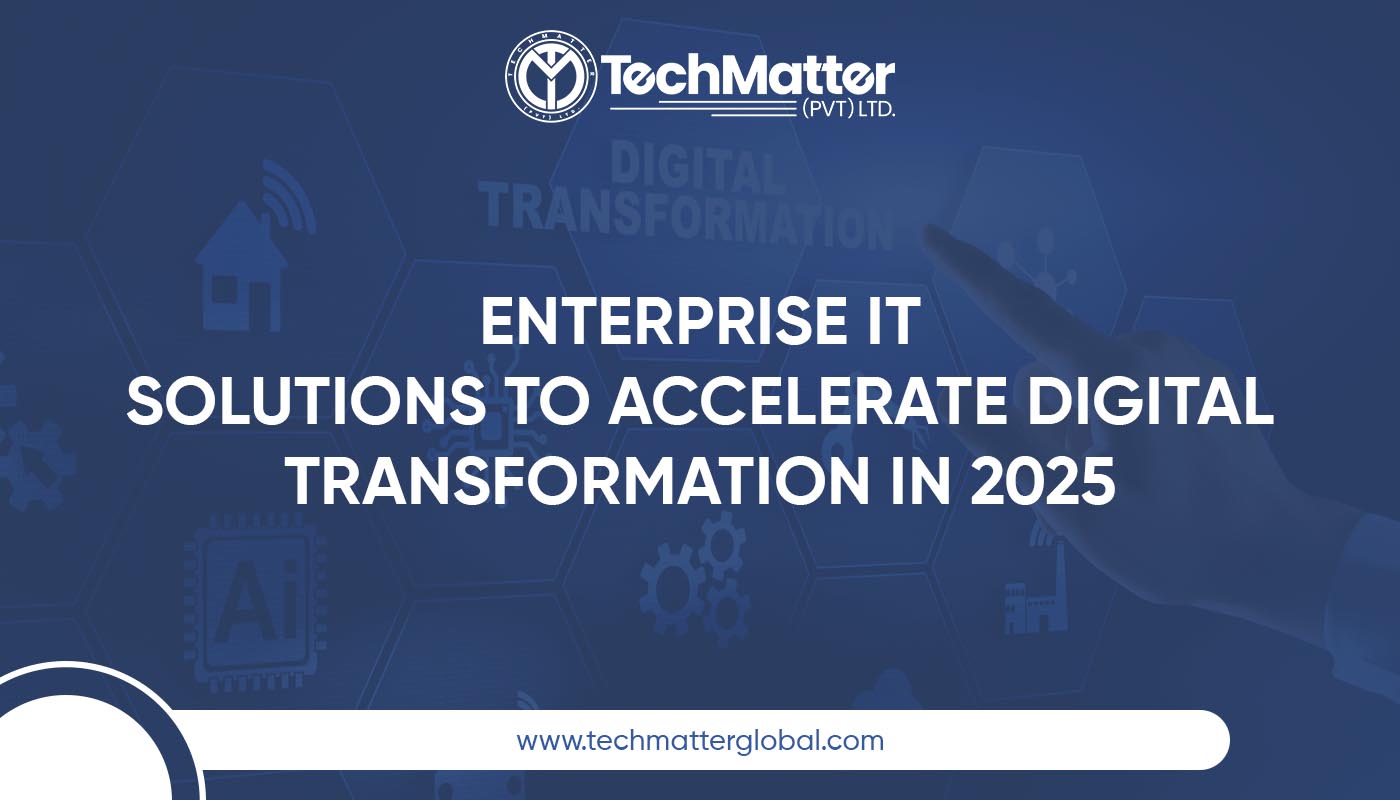In 2025, digital transformation is not just a buzzword, it’s a business imperative. Enterprises worldwide are leveraging advanced IT solutions to stay competitive, enhance efficiency and meet evolving customer expectations. This article explores how Enterprise IT Solutions and Services are accelerating digital transformation in 2025 highlighting key components, challenges, strategies and future trends.
The Evolution of Digital Transformation
Digital transformation has evolved from simple digitization of paper records to complex integrations of advanced technologies. In 2025 factors such as increased remote work, customer demand for personalized experiences and rapid technological advancements are driving enterprises to adopt comprehensive IT solutions.
Core Components of Enterprise IT Solutions
Cloud Computing
Cloud computing provides scalable resources, enabling businesses to adapt quickly to changing demands. It reduces the need for physical infrastructure, lowers costs and offers flexibility in deploying applications and services.
Artificial Intelligence and Machine Learning
AI and ML are transforming how businesses operate by automating processes, analyzing large datasets for insights and enhancing customer experiences through personalization.
Internet of Things (IoT)
IoT devices collect and transmit data in real time, allowing enterprises to monitor operations, predict maintenance needs and optimize supply chains.
Blockchain Technology
Blockchain ensures secure, transparent transactions and data integrity. It’s particularly beneficial in industries like finance, healthcare and supply chain management.
Cloud Computing as a Catalyst
Adopting cloud computing allows enterprises to:
- Scale Operations: Easily adjust resources based on demand.
- Enhance Collaboration: Facilitate remote work and real time collaboration.
- Improve Disaster Recovery: Ensure data backup and quick recovery options.
Hybrid and multi-cloud strategies are becoming popular offering flexibility and reducing dependency on a single provider.
AI and ML Integration
Integrating AI and ML helps enterprises:
- Automate Routine Tasks: Free up human resources for strategic activities.
- Enhance Decision-Making: Analyze data to provide actionable insights.
- Improve Customer Service: Use chatbots & virtual assistants for 24/7 support.
IoT and Connected Devices
IoT devices enable:
- Real-Time Monitoring: Track equipment performance and environmental conditions.
- Predictive Maintenance: Anticipate and address issues before they cause downtime.
- Operational Efficiency: Streamline processes and reduce waste.
Blockchain for Security and Transparency
Blockchain Enterprise technology solutions offers:
- Secure Transactions: It is very essential to implement measures that protect against fraud and unauthorized access ensuring that transactions are conducted safely.
- Data Integrity: Maintaining the accuracy and reliability of information is very important meaning that data should remain unaltered throughout its lifecycle.
- Transparency: Establishing a clear IT audit trail is vital for compliance purposes as it allows for easy tracking and verification of data and transactions.
Challenges in Implementing IT Solutions
Data Privacy Concerns
Compliance with data protection laws, such as the General Data Protection Regulation is very important for organizations. You need to understand the complexities of the laws, adopt best data management practices and ensure all personal data is collected, processed and stored in a secure manner. Organizations need to routinely monitor their data handling processes in order to protect consumer rights, avoid high penalties and demonstrate some trustworthiness to their customers.
Integration with Legacy Systems
When adopting new technologies, companies face the challenge of integrating them with their existing legacy systems. This requires careful planning to ensure that new solutions can operate seamlessly alongside older infrastructure without disrupting current operations. Businesses must evaluate their IT architecture identify potential compatibility issues and develop a strategic integration plan that minimizes downtime & maximizes the efficiency of both new and legacy systems.
Skill Gaps
The speed of development of emerging technologies has produced a massive skills gap for workers at all levels. Organizations must take a proactive approach and figure out what they can do to provide training opportunities, create a culture of learning, and think about how they can work with educational institutions to create useful program curriculam. By doing this, organizations can ensure they have the workforce needed to take advantage of emerging technology and stay competitive in the marketplace.
Successful Implementation Strategies
To overcome challenges:
- Change Management: It is essential to prepare employees for transitions by providing clear communication and ongoing support. This approach helps to ease the adjustment process and fosters a more adaptable workforce.
- Continuous Training: Maintaining competition and successfully working with changing industry requires investments in upskilling the workers by means of frequent training which guarantees that staff members stay informed and skilled in their positions.
- Technology Partnerships: Working with those specialized in Enterprise technology solutions can help in implementing new systems and procedures. By mean of collaborating with such specialists, businesses bring insightful advancement and get evolve with new technologies.
Conclusion
In 2025, adopting business IT solutions will be essential for digital transformation. Businesses may improve productivity, security and customer pleasure by utilizing technologies like blockchain, cloud computing, AI and the Internet of Things. Businesses will be positioned for long-term success in the digital age if implementation issues are resolved via partnerships and strategic planning.

Leave a Reply